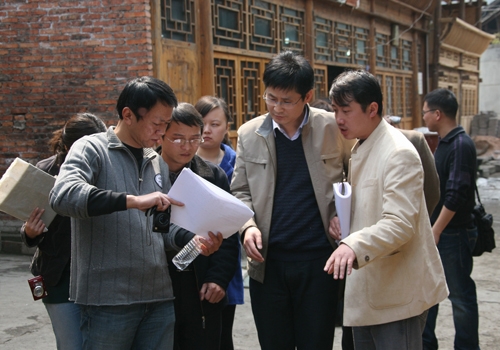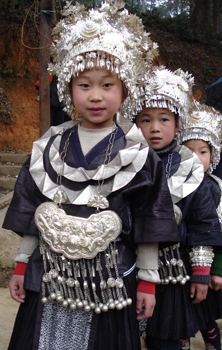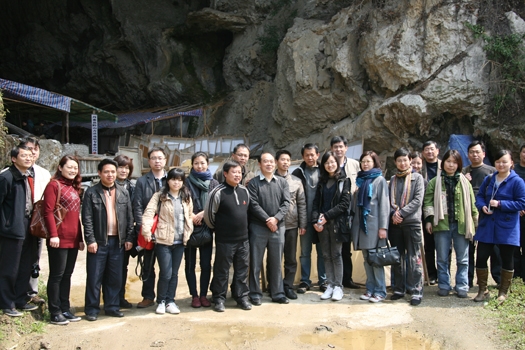| Introduction to the Guizhou Cultural and Natural Heritage Protection and Development Project |
| Author:LI Yanan PublishDate:2011-10-21 Hits:6211 |
|
Guizhou Province is located in southwest China and has a total population of about 39.5 million. The province has one of the largest ethnic minority populations in China with 14 million, or 3 8% of the population, belonging to 49 different ethnic groups. Although underdeveloped, Guizhou is richly endowed with cultural and natural resources. However, this rapid growth has exposed structural weaknesses in the implementation of the current tourism strategy and presented challenges for the conservation and sustainable development of the province’s heritage assets. The Bank will bring to the project (US$ 60 million in loan) extensive global experience in natural and cultural heritage protection, sustainable tourism development, and rural economic development. An important feature of the project is the adoption of the community-based development (CBD) approach for the project goals, which are to protect cultural heritage and to generate local income. The CBD approach involves special skills training and capacity building for minority villages. The project focuses on the south of Guizhou Province, including Qiandongnan Prefecture, Qianxinan Prefecture, Anshun City & Guiyang City. Major work is as follows: Component 1: Ethnic Minority Cultural Heritage Protection (US$44.62 million), covering 17 minority villages and 4 historic towns in Qiandongnan and Qianxinan Prefectures. Component 2: Natural Heritage and Scenic Site Protection and Development (US$21.35 million), consisting the carrying out of physical investments to improve infrastructure and tourism facilities in: (a) Guanling National Geo-Park in Anshun Municipality; (b) Dingxiao National Geo-Park in Qianxinan Prefecture; (c) Wanfenglin National Scenic Park in Qianxinan Prefecture; and (d) Shanmu River Scenic Park in Qiandongnan Prefecture. Component 3: Tourism Gateway Town Facilities Development (US$16.34 million), consisting the following: (a) construction of tourist information centers in selected counties in Qiandongnan Prefecture; (b) construction of the Guizhou Cultural and Natural Heritage Protection and Development Center in Guiyang. (c) Tourism promotion and training in Qiandongnan Prefecture. Component 4: Capacity Building and Project Implementation Support (US$1.81 million), consisting the following: (a) strengthening of institutional capacity and capability; (b) strengthening of capacity and capability in the tourism sector; (c) reviewing and updating of the Guizhou Tourism Development Master Plan to align its strategies to current circumstances.
  TJUPDI and WHITRAP Shanghai (TJ Team), have laid great emphasis on the project. Since the contract was signed on Dec 10, 2010, the TJ Team has been to the local site and carried out the work in aspects of project management, field study, process organization, technology review, community participation and general trainings, which are as follows. - Project Management In Jan, 2011, the FTP site of the TJ team was started using, for documentation and updating on time In Mar, 2011,Tongji Research Office for the Project was established, and the website, www.tjupdi.com/GuiZhou, came into service, which facilitate the communications between the union and the administration departments in Guizhou Province. - Field Study Field studies were launched by the TJ Team in the following villages in Qiandongnan Prefecture and points in Qianxinan Prefecture, and the team acknowledged the related issues in the progress of the project, collected the advice and opinion, and raised the feasible advice to promote the project after discussion in depth with local officials and residents. •villages Danzhai County - Shiqiao village Kaili City - Jidao village, Nanhua village, huaienbao village Taijiang County - Shidong town Jianhe County - Wubao village, Zhanliu village •cities Anshun, Xingyi, Zhenfeng, etc. - Process Organization According to the result of the investigation in the field study and based on the Community Handbook, the TJ team clarified and simplified the process by the 'Guidance to the Practical Implementation in the Community'. - Revision on the Technological Documents Up till Sep, 2011, TJ Team had completed the revision work on the 10 project points, including the town and village planning, proposal of the infrastructure, and the detail drawings of restoration project. - Training A series of trainings were developed on the topic of the general conception of heritage, the catalog and protection of the village heritage and the community work, with the target audience of officials in PMO, Prefectural Office and community coordinators. The training resulted in a good effect when it was launched together with the field study based on real conditions.
|
- News | WHITRAP Shanghai and CNR-ISPC bilateral meeting
- News | WHITRAP meets Cité de l’Architecture et du Patrimoine
- WHITRAP Hosting "Workshop on Preliminary Assessment for National Focal Points of the Asia Region" in Chengdu
- WHITRAP Shanghai meets UNESCO
- INTERNATIONAL CONFERENCE PRELIMINARY ANNOUNCEMENT & CALL FOR PAPERS
- Observation of the 46th Session of the World Heritage Committee
Copyright © 2009-2012 World Heritage Institute of Training and Research-Asia and Pacific (shanghai)



